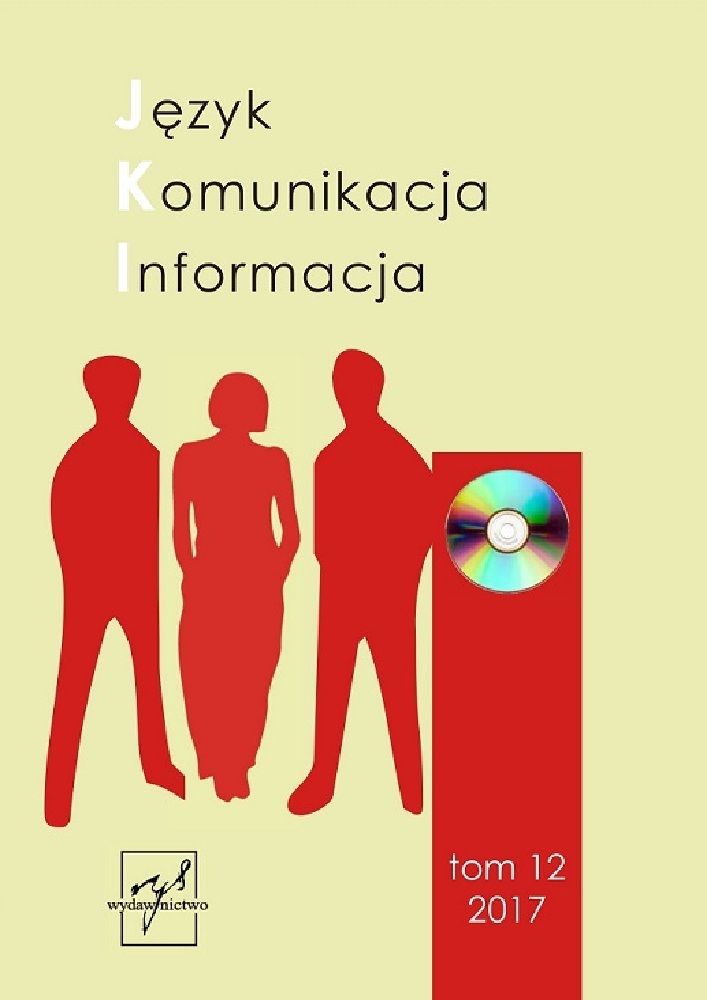Abstrakt
Esperanto jest planowym międzynarodowym językiem pomocniczym, skonstruowanym przez L.L. Zamenhofa i wydanym w 1887 r. Mimo że został stworzony, aby ułatwić komunikację międzynarodową, stał się narzędziem samoidentyfikacji. Niniejszy artykuł ma na celu opisanie postaw językowych, które formują się w esperanckiej wspólnocie językowej oraz wykazanie, że te postawy kształtują tę społeczność.Bibliografia
Alòs i Font, H. 2012: Catalan Esperantists: Pacifists in a globalised world. ICIP Working Papers (3). 1–64.
Blanke, D. 2001: Vom Entwurf zur Sprache. In: Schubert, K. (ed.): Planned languages: from concept to reality. Brussel: Hogeschool voor Wetenschap en Kunst. 37–89.
Caligaris, I. 2016: Una lingua per tutti, una lingua di nessun paese: una ricerca sul campo sulle identità esperantiste. Ariccia: Aracne Editrice.
Duličenko, A. 2001: Planlingvo: inter lingvokonstruo kaj etna lingvo. In: Fiedler, S. and Liu, H. (eds): Studoj pri interlingvistiko: Festlibro omaĝe al la 60-jariĝo de Detlev Blanke = Studien zur Interlinguistik: Festschrift für Detlev Blanke zum 60. Geburtstag. Dobrichovice (Praha): Kava-Pech. 109–115.
Fettes, M. 1996: The Esperanto community: A quasi-ethnic linguistic minority? Language Problems and Language Planning 20(1): 53–59.
Fiedler, S. 2002: On the main characteristics of Esperanto communication. In: Knapp, K. and Meierkord, C. (eds): Lingua Franca Communication. Peter Lang. 53–86.
Fiedler, S. 2006: Standardization and self-regulation in an international speech community: the case of Esperanto. International Journal of the Sociology of Language 2006 (177): 67–90.
Fiedler, S. 2017: Lingua-franca-Kommunikation – wirklich ein Fall des Let-it-pass? (Eine Analyse von Reparaturen in der Esperanto-Kommunikation). In: Brosch, C. and Fiedler, S. (eds): Jahrbuch der Gesellschaft für Interlinguistik. Leipzig: Leipziger Universitätsverlag GmbH. 57–71.
Galor, Z. and Pietiläinen, J. 2015: UEA en konscio de Esperantistoj. Dobrichovice (Praha): Kava-Pech.
Kimura, G.C. 2012: Esperanto and minority languages: A sociolinguistic comparison. Language Problems & Language Planning 36(2): 167–181.
Koutny, I. 2010: Esperantlingva bildo de la mondo. In: Blanke, D. and Lins, U. (eds): La arto labori kune: festlibro por Humphrey Tonkin. Rotterdam: Universala Esperanto-Asocio. 290–305.
Krägeloh, C. and Neha, T.N. 2014: Lexical expansion and terminological planning in indigenous and planned languages. Language Problems & Language Planning 38(1): 59–86.
Melnikov, A. 1992: Specifaj kulturaj scioj de la esperantista kvazaŭetno kaj ilia respeguliĝo en la koncerna lingv(aĵ)o. Rostov-na-Donu.
Pietiläinen, J. 2010: Plurlingvismo kaj Esperanto: Ideologia ŝanĝiĝo en la Esperanto-movado. In: Blanke, D. and Lins, U. (eds): La arto labori kune: festlibro por Humphrey Tonkin. Rotterdam: Universala Esperanto-Asocio: 781–792.
Rašić, N. 1994: La rondo familia: sociologiaj esploroj en Esperantio. Pisa: Edistudio.
Stria, I. 2015a: Esperanto as a Natural Language. Język. Komunikacja. Informacja 10: 32–42.
Stria, I. 2015b: Esperanto speakers – an unclassifiable community? In: Malec, W., Rusinek, M., and Sadowska, A. (eds): Challenging Ideas and Innovative Approaches in Applied Linguistics. Lublin: Wydawnictwo KUL. 175–189.
Stria, I. 2016: Inventing languages, inventing worlds. Towards a linguistic worldview for artificial languages. Poznań: Wydział Neofilologii UAM w Poznaniu.
Wood, R.E. 1979: A Voluntary Non-Ethnic, Non-Territorial Speech Community. In: Mackey, W. F. and Ornstein, J. (eds): Sociolinguistic Studies in Language Contact. Berlin, New York: De Gruyter Mouton.
Licencja
Polityka Open Access: Czasopismo zapewnia natychmiastowy, otwarty dostęp do wszystkich swoich treści zgodnie z zasadą, że badania swobodnie dostępne zwiększają i przyśpieszają globalny rozwój nauki i wymianę wiedzy.
Nadsyłając zgłoszenia, Autorzy zgadzają się na to, że artykuły w niniejszym czasopiśmie są publikowane w otwartym dostępie (Open Access) i podlegają licencji Creative Commons w wersji 4.0 BY-NC-ND.
